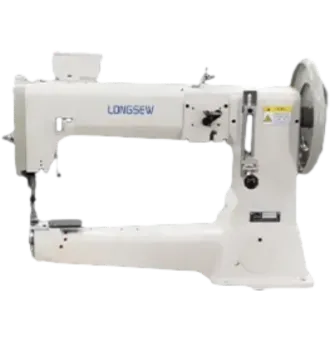sewing thick material on sewing machine
Sewing Thick Material on a Sewing Machine Tips and Techniques
Sewing thick materials can be a daunting task, especially for those who are new to sewing or using a sewing machine. However, with the right tools, techniques, and a bit of practice, you can successfully sew through heavy fabrics such as denim, canvas, leather, and upholstery material. This article provides valuable insights into how to effectively sew thick materials on a sewing machine, ensuring a smooth and enjoyable sewing experience.
Choosing the Right Machine
The first step in sewing thick materials is selecting an appropriate sewing machine. While most standard sewing machines can handle moderate layers of fabric, they may struggle with heavier materials. Consider investing in a heavy-duty sewing machine designed specifically for this purpose. These machines typically have stronger motors, heavier frames, and specialized presser feet that can easily accommodate thick materials.
Selecting the Right Needle
The type of needle you use is critical when sewing thick fabrics. A standard needle may bend or break under pressure, leading to frustration and potentially damaging your project. It’s best to use a heavy-duty needle, such as a jeans needle or a leather needle. These needles have a thicker shaft and a sharper point, allowing them to penetrate through multiple layers of tough fabric without getting dull or bent.
Using the Right Thread
In addition to the needle, the choice of thread also matters. For thick materials, it’s advisable to use a heavier thread, such as polyester or nylon, which offers more durability and strength than standard cotton thread. Make sure to match the weight of the thread to the thickness of the fabric you are using; for very thick materials, a heavier thread may be necessary.
Preparing Your Fabric
Before you start sewing, it’s essential to prepare your fabric properly. Wash and dry the material according to its care instructions to pre-shrink it and remove any dirt or finish. Iron the fabric flat if possible to reduce bulkiness and make it easier to work with. If you’re working with leather or particularly slippery fabrics, consider using a walking foot, which helps grip and feed the layers evenly through the machine.
sewing thick material on sewing machine

Techniques for Sewing Thick Fabrics
1. Use a Walking Foot A walking foot attachment helps to evenly move multiple layers of fabric through the machine, reducing puckering and shifting.
2. Increase the Stitch Length Thick materials often sew better with a longer stitch length. Adjust your sewing machine settings to create longer stitches, which can help penetrate thick layers more easily.
3. Adjust Tension Settings Check your sewing machine’s tension settings. Heavier fabrics may require a lower tension to avoid puckering and ensure smooth stitching.
4. Sew Slowly When working with thick materials, take your time. Sew at a slow and steady pace to maintain control over the fabric and prevent jams.
5. Use Seam Allowances When sewing seams, ensure that you have sufficient seam allowances, especially if the fabric frays. It’s a good practice to use a serger or zigzag stitch along raw edges.
6. Pin or Clip Layers Securely To prevent shifting, use plenty of pins or fabric clips to hold the layers together. This will help keep everything in place as you sew.
Conclusion
Sewing thick materials on a sewing machine may seem challenging, but with the right machine, tools, and techniques, you can achieve professional-looking results. Remember to choose the right needle and thread, prepare your fabric, and sew slowly. With practice, you will build confidence in your skills and be able to tackle a variety of projects using thick materials. Happy sewing!
-
Industrial Cylinder Arm Sewing Machine: Revolutionizing Heavy-Duty SewingNewsJul.28,2025
-
Cylinder Arm Sewing Machine: Perfect for Special Sewing ApplicationsNewsJul.28,2025
-
Cylinder Bed Sewing Machine: Essential for Sewing Complex MaterialsNewsJul.28,2025
-
Heavy Duty Sewing Machine: The Essential Tool for Industrial ApplicationsNewsJul.28,2025
-
Computerized Pattern Sewing Machine: Revolutionizing Precision StitchingNewsJul.28,2025
-
Heavy Duty Industrial Sewing Machine: Power Meets PrecisionNewsJul.28,2025
-
Leather Sewing Machine: The Industrial Standard for Tough MaterialsNewsJul.18,2025





























